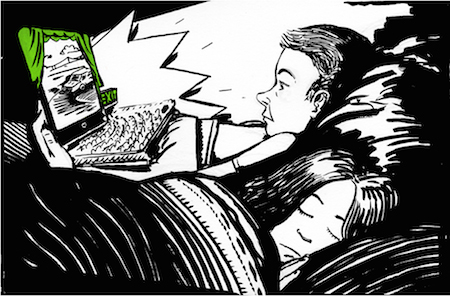ZEITGUIDE TO A SUSTAINABLE SPIDERMAN

ZEITGUIDE “Content” Image by Kristofer Porter
A few weeks ago, our ZEITGUIDE explored the realities of climate change reflected in the recently released AAAS and UN reports. Extreme weather and droughts will continue to cause natural catastrophes, food price inflation and global conflict. While many are concerned about this bleak outlook, there are many players who are trying to make a difference.
ZEITGUIDE 2014 mentions the great work many legacy companies and start-ups are doing to become TRIPLE BOTTOM LINERS: companies concerned with Profit, People and Planet. How companies assess their social and environmental impact has become as important as how they judge their profit.
Sony Pictures Entertainment has demonstrated that this type of thinking can also be applied to the production of movies. “The Amazing Spider-Man 2,” which has its domestic release today, is the greenest film ever made in the history of the studio.
Yes — it was green in terms of its theme; the villain, Electro (Jamie Foxx) disrupts New York City by sucking up all of its energy. But in terms of production, the cast and crew recycled, composted, neutralized carbon and used sustainable materials and technology.
Here’s some fascinating facts:
- By using reusable water bottles, they avoided wasting 193,000 plastic water bottles, enough to surround Manhattan.
- They recycled or composted enough materials to fill the reservoir in Central Park (5,195 cubic yards).
- They diverted 755 tons of materials from the landfill, enough to make 3.5 Statues of Liberty – a 52% diversion rate.
- LED lights were incorporated into special effects set lighting, saving 80% the energy of normal bulbs.
- They bought 7,000 sheets of FSC certified plywood, which is the leading standard to ensure protection of high conservation value forests. Because of the studio’s efforts in lumber, many retailers that target film productions are now stocking FSC certified products.
- Sets were reused within the production, 30% of the plywood was reused from one set build to another, they reused sets from the first film, and are “folding and holding” the majority of sets for potential reuse in the future.
- The production diverted 52% of its waste stream from going to a landfill, which is three times the average diversion rate of New York City.
Some of the activities extended beyond the film shoot. They planted trees at select shooting locations, including 50 at the East River Park, which had been devastated by Hurricane Sandy. They did “product placement” for the environment, working in eco-conscious messaging on the set decoration and using the Twitter campaign of movie updates to deliver environmental messages as well.
Between this work, and other carbon offsets, Sony believes that the entire physical production of The Amazing Spider-Man 2, as well as its publicity tour, are carbon-neutral.
The film also got a “Green Seal” award for it’s efforts from the Environmental Media Association. In fact, the president of the 25 year organization, Debbie Levin, tells The Hollywood Reporter that the sustainable practices were also cost-effective, which is an “unbelievably huge task” for a film of such scale.
And, here’s a shout out to Katherine Oliver, who was commissioner of the Mayor’s Office of Film, Theater and Broadcasting during the Bloomberg administration. She did an amazing job turning New York City into a cinematic epicenter. The Amazing Spider-Man 2 was one of the final films she worked on, and she too contributed greatly to the greening of the film business.
For more insights on how other industries are becoming more sustainable and adapting their operations because of climate change, get ZEITGUIDE 2014 here.
Have an amazing weekend…
Keep Learning,
Brad Grossman
Founder, Grossman and Partners
Creator, ZEITGUIDE
